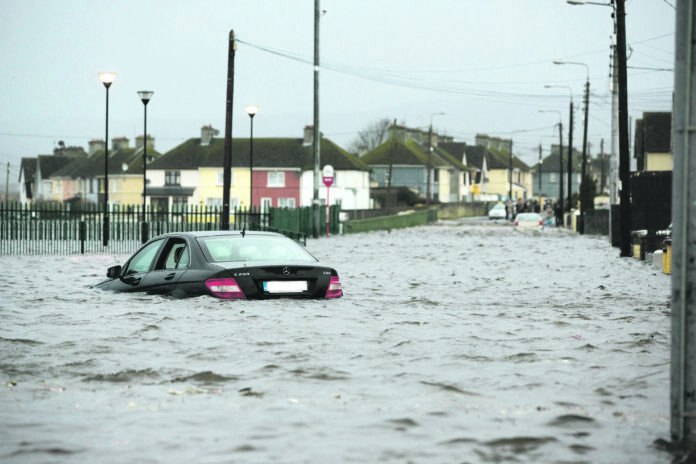
LIMERICK has become the only city in Ireland to have an artificial intelligence-led early warning system to monitor the risk of flooding.
CeADAR, Ireland’s centre for applied artificial intelligence, has begun using AI in conjunction with satellite technology to develop an early warning system for flooding in Ireland, and has named a number of pilot areas included in the project.
Researchers at CeADAR used data collected by the European Space Agency’s Sentinel-1 satellite to map historical flooding areas across the country in order to develop the flood warning system.
Limerick City was included in the first phase of the project, as well as Carrick-on-Shannon in Leitrim, Midleton in Cork, and Athlone in Westmeath.
The project saw maps of the included areas, collected by the satellite, fed to an AI model designed to predict the extent of future flooding events.
CeADAR researchers say the model is accurate to a distance of 20 meters.
It is hoped the model will soon be used to forewarn threatened localities ahead of periods of heavy rain, providing local authorities with time to take emergency measures to limit damage to homes and businesses, evacuate residents, and protect livestock.
The flood prediction model forms part of CAMEO, a €9m project led by University College Dublin to develop an Earth Observations (EO) services sector in Ireland and explore the potential impact of EO data in the areas of climate, agriculture, and the marine.
Dr Omid Memarian Sorkhabi, a post-doctoral researcher leading the development of the model at CeADAR, said that “flooding events like the one that hit Midleton during Storm Babet are devastating for households and business owners whose properties are worst affected”.
“The silver lining is that Sentinel-1 was right over the area at the time, so we have gathered a lot of valuable data that will help predict the extent of the next event and ensure that future damage is limited.”
“We’re in the process of developing, testing, and validating the tool. But there’s huge potential for it to be made available to local authorities and other research projects.
“There is also a global scope to this. Sentinel-1 is always monitoring, so there’s a lot of historical data on other parts of the world on which we could train and expand the model.”
Director of Applied Research at CeADAR, Dr Oisín Boydell, added: “This project has major implications for communities in areas at high risk of flooding in Ireland. We’ve witnessed extensive flooding across the country in recent times and, with increasing greenhouse gas emissions certain to lead to more rapid climate change, we can expect even more intense precipitation events in the future.”








